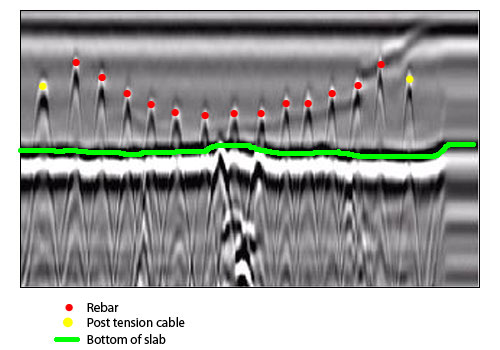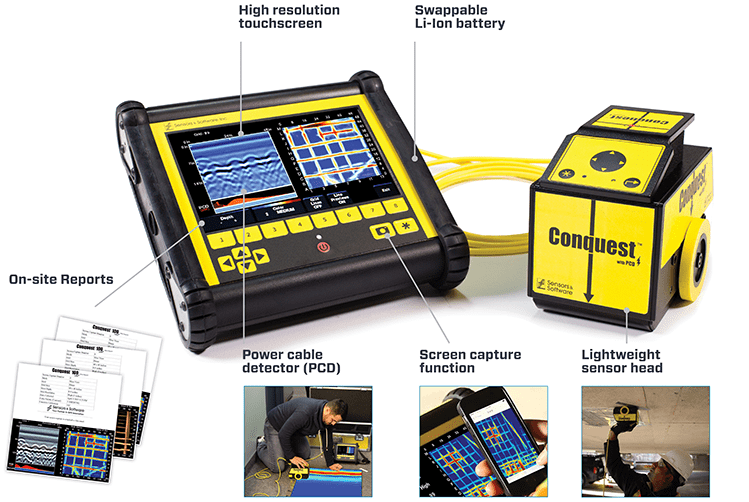Concrete Scanning: A Critical Action Towards Guaranteeing Structural Honesty and Safety And Security
In the realm of construction and facilities upkeep, the importance of concrete scanning can not be overemphasized. This careful process holds the vital to revealing possible threats hidden below the surface area of seemingly solid structures. By employing sophisticated modern technology and approaches, concrete scanning acts as a crucial tool in making sure that the honesty and safety and security of bridges and structures are supported to the highest criteria. Nevertheless, beyond its surface-level effects, the duty of concrete scanning prolongs far much deeper than satisfies the eye.
Significance of Concrete Scanning
Concrete scanning plays a vital role in making sure the structural honesty and safety of structures and facilities tasks. By using innovative modern technologies such as ground-penetrating radar (GPR) and electro-magnetic induction, experts can non-destructively evaluate concrete structures to spot possible problems, gaps, ingrained items, and support format. This process allows early detection of abnormalities that might endanger the stability of a structure, stopping expensive damages and guaranteeing the safety of owners.
Prior to exploration, cutting, or coring right into concrete, scanning assists determine the accurate places of rebar, post-tension cords, and other ingrained components, reducing the danger of accidental hits that might lead to architectural weak points. Furthermore, concrete scanning help in top quality control by confirming the density of concrete covers and discovering any discrepancies that might influence the general sturdiness of the framework.
Innovation for Concrete Assessment

Advantages of Early Detection
Timely discovery of structural problems can dramatically mitigate risks and ensure the durability of construction projects. By identifying possible problems at an early stage in the building process, stakeholders can take proactive steps to address concerns prior to they escalate right into larger and a lot more costly problems. Among the vital benefits of very early detection is the prevention of structural failings, which can present significant security dangers and result in task delays and economic losses.
Moreover, early detection enables prompt repair services and upkeep, which can assist prolong the lifespan of the structure. By dealing with issues promptly, building and construction teams can avoid costly repair work or also the demand for early replacement of structural components. This positive technique not only conserves time and cash yet also improves the total safety and durability of the building and construction task.
Additionally, early discovery can enhance job preparation and decision-making by offering stakeholders with important understandings into the problem of the structure. Equipped with this information, task supervisors can make educated options pertaining to building and construction approaches, timelines, and products, causing much more effective and effective job outcomes.
Making Certain Structural Security
Guaranteeing the architectural stability of a construction project is critical to its safety and security and long browse around this web-site life. Structural stability refers to the capacity of a structure or facilities to preserve its form and function under ecological conditions and various tons. Our site To accomplish this, comprehensive evaluation and monitoring of the framework are essential. Concrete scanning plays an essential role in ensuring architectural stability by discovering possible concerns such as spaces, delamination, or support corrosion that could endanger the integrity of the structure gradually.
By using advanced scanning modern technologies like ground-penetrating radar (GPR) and electro-magnetic induction, building and construction specialists can non-invasively inspect concrete frameworks to identify areas of concern under the surface area. This positive method allows for the early detection of weaknesses or defects, enabling timely fixings or reinforcement to protect against structural failures.
Regular concrete scanning during different construction phases and throughout the life process of a framework can aid maintain its stability, alleviate threats, and ensure the safety of owners. By focusing on structural security with concrete scanning, construction tasks can improve their resilience and resilience, ultimately adding to better safety and security and longevity.
Protecting Against Essential Failings
Implementing regular assessments, such as concrete scanning, can expose covert problems like spaces, splits, or deterioration that could jeopardize the honesty of a structure. By using advanced scanning technologies like Ground Passing through Radar (GPR) or Concrete X-ray, engineers can non-destructively analyze the condition of concrete and recognize weak factors that require reinforcement or repair work.

Conclusion
To conclude, concrete scanning plays a crucial function in ensuring structural integrity and safety by making use of innovative modern technology for early discovery of possible issues. This proactive method assists avoid important failures and guarantees the security of structures. It is vital to prioritize concrete assessment as a standard practice to safeguard the durability and safety and security of structures and facilities.
Concrete scanning plays a crucial duty in ensuring the structural integrity and safety of structures and facilities tasks. Furthermore, concrete scanning aids in high quality control by validating the density of concrete covers and spotting any discrepancies that might influence the general toughness of the structure. Concrete navigate here scanning plays a critical function in guaranteeing architectural security by spotting possible problems such as voids, delamination, or reinforcement corrosion that could endanger the integrity of the framework over time.

In final thought, concrete scanning plays an essential duty in making certain architectural integrity and security by utilizing innovative modern technology for very early detection of prospective issues.